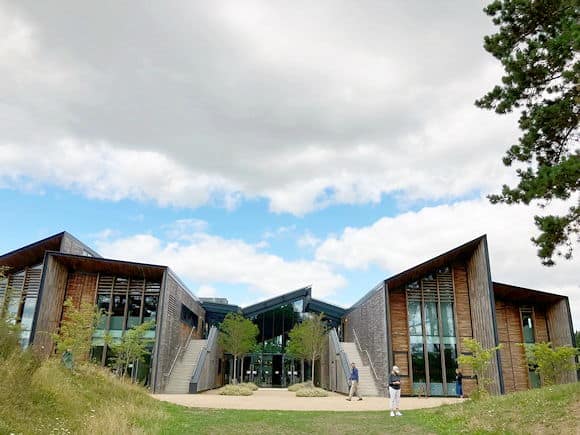
North Entrance to RHS Hilltop
Until a few years ago, the Hilltop site at the Royal Horticultural Garden at Wisley was a storage yard, an uninspiring glasshouse and a line of somewhat tired small show gardens. There was a small conventional vegetable garden nearby, and another some way away. It was as if this great garden petered out once it reached the top of the hill.
The RHS is a charity with over 600,000 members and an annual income of £120m (that British love of gardening). A very ambitious £160m development programme has taken place over the last five or so years; the biggest recipients being the new fifth RHS garden at Bridgewater and Wisley.
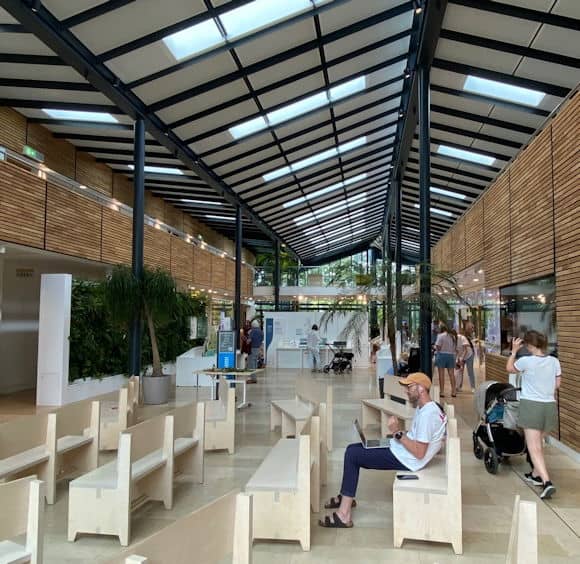
The Atrium
The Hilltop site has been transformed into Wisley’s most spectacular attraction by the addition of a fine Y-shaped building clad in sweet chestnut, designed by architects Wilkinson Eyre. The east wing of the new building contains scientific laboratories, the library and a home for the RHS Herbarium, the world’s largest collection of pressed and dried cultivated plant specimens. The west wing has an events hall, the World Food Cafe and access to the Sky Terrace which gives an overview of the surrounding gardens. The two wings are linked by a double height glazed atrium, with interactive learning showcases of interest to both children and adults, and a small informal lecture area.
Three new gardens wrap around the building. To the southern frontage lies the Well-Being Garden, to the east side the Wildlife Garden and to the west the World Food Garden. (On the north side there is a steep slope down to the Clear Lake and the M3 motorway.)
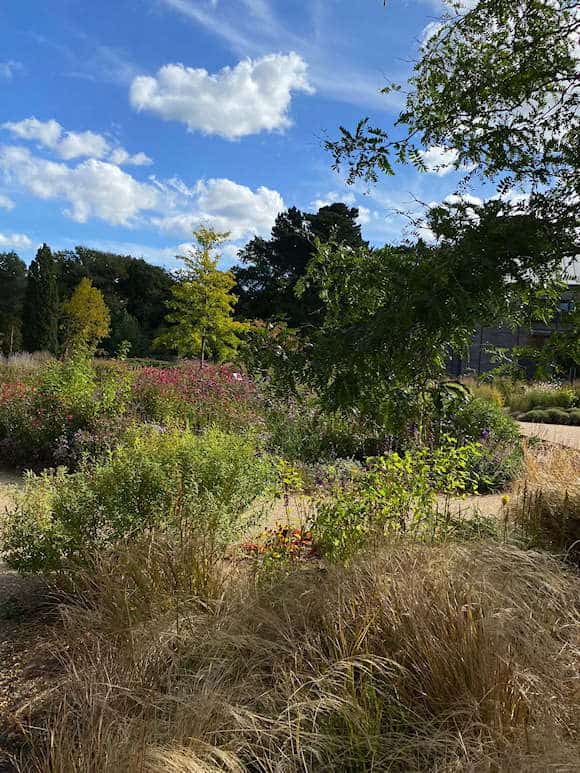
The Well-Being Garden
The Well-Being Garden, by designer Matt Keightley, with input from Wisley’s scientists and curatorial team, showcases the RHS philosophy for gardening as a form of physical and psychological therapy. It is a space illustrating the benefits of gardening to our health in a series of small horseshoe-shaped gardens enclosed with planted mounded banks giving a sense of enclosure, and signage such as ‘pause’, ‘breathe’, reflect’, and ‘listen’. The idea is to encourage visitors to explore the many ways garden plants and design can affect emotional well-being, and it also provides a site for scientific research.
However, it left me underwhelmed. It didn’t have that quiet, meditative charm I love about gardens, and being sited by the front entrance to such a busy attraction does the garden no favours.
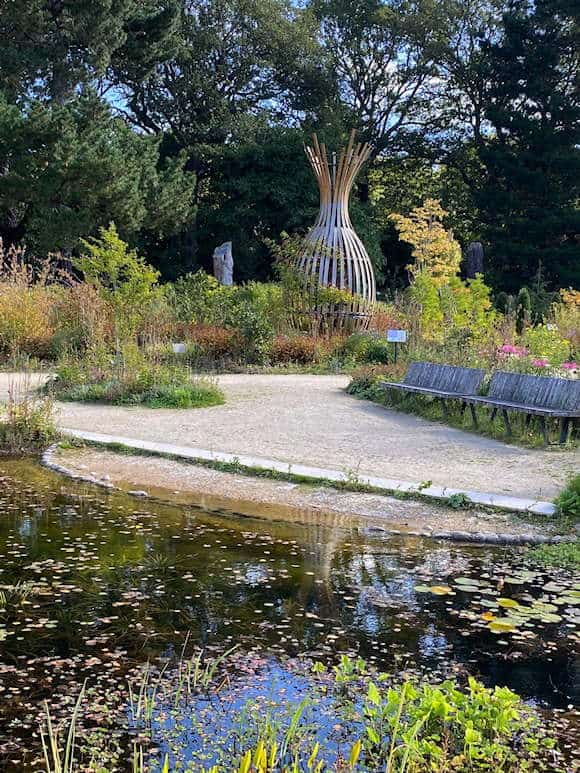
The Wildlife Garden
The Wildlife Garden, by one of my favourite designers, Ann-Marie Powell, is a beautifully laid out example of a biodiverse garden, with its meadow areas, pond, pollen-laden annual and perennial flowers, log piles and ornamental insect hotels. In design terms it does not break new ground, but more importantly it is a testbed for the horticultural research carried out by the scientists at Hilltop.
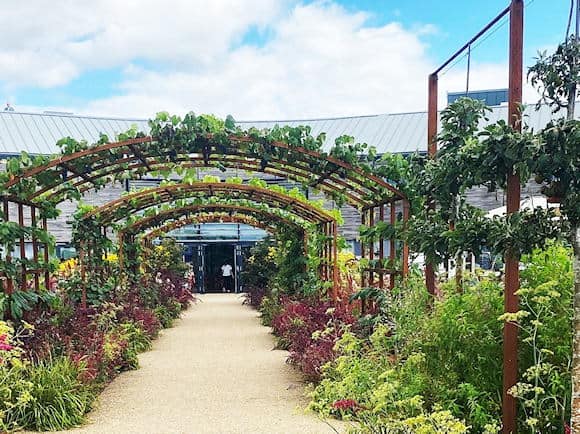
The World Food Garden – The Pergola
The World Food Garden replaces the two older vegetable gardens with a garden that inspires visitors to try ideas in their own gardens but which also showcases unusual crops that grow well, reflecting the UK’s cultural diversity.
Also designed by Ann-Marie Powell, it has a broad pergola running from the café through the central section of the garden, covered with climbing vegetables such as gourds, and is edged with edible, annual and perennial flowers. To either side is outdoor seating for the café, and beds of household vegetables with trusses of different types of tomatoes.
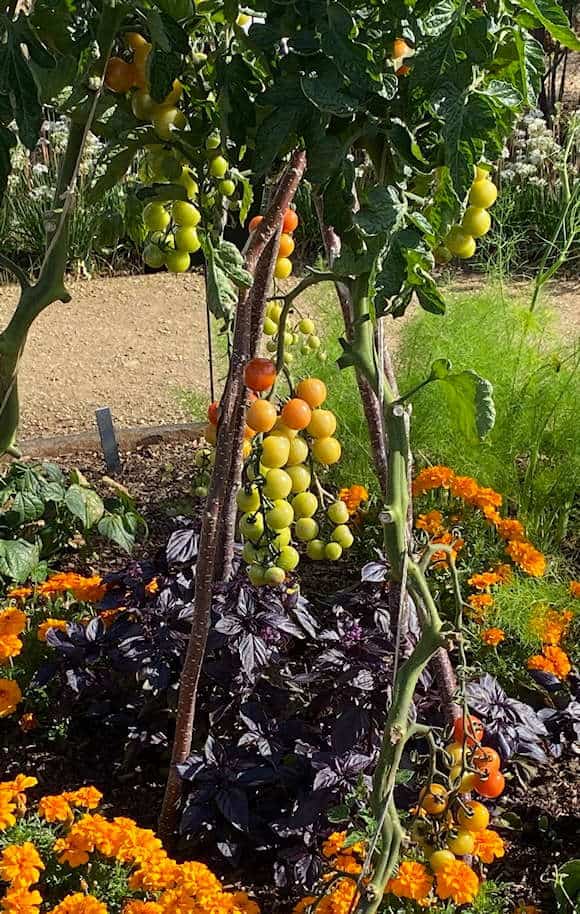
I’ve always been slightly confused about the difference between squashes, pumpkins and gourds and writing this has prodded me into finding out what the difference is. Squashes are primarily grown to be eaten, pumpkins being winter varieties of squash, whilst gourds are decorative.
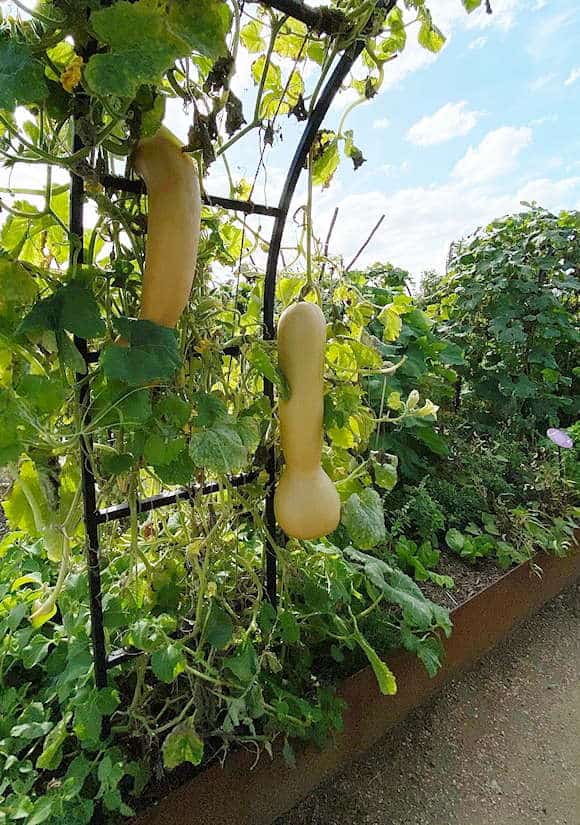
The World Maze
Further away from the building is the World Maze with raised corten rusted steel planters to each side, bringing the unusual plants closer to both childrens’ and grown-ups’ eye level. These planters are connected with arches, an ideal way to display squashes and gourds. It is a curious, joyful, and wondrous place, especially in early autumn when the garden is at its most productive.
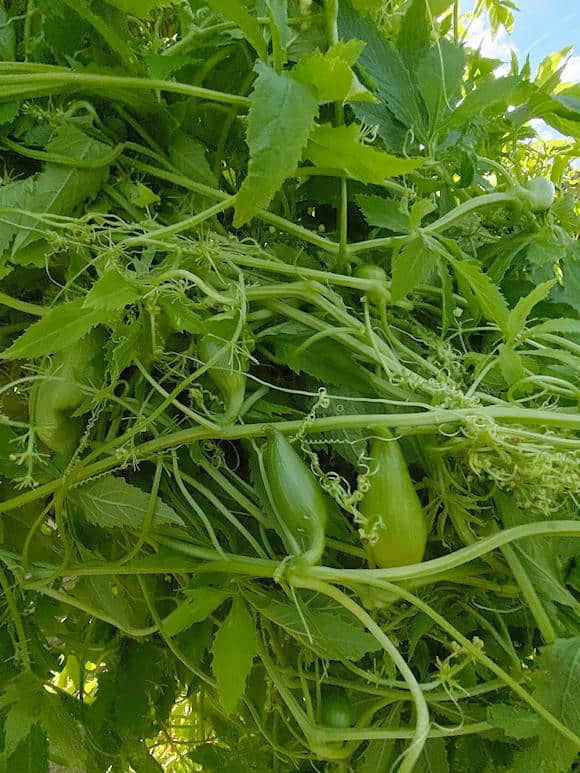
There are also unusual crops such as yacon, an Andean root vegetable with a sweet crisp texture eaten in salads, and climbing perennial masuha with edible tubers that are delicious when roasted.
Nature still has the power to excite me, and I was amazed to see how hundreds of bees from different species zone in on very different but adjacent plants, none ending up on the wrong plant.
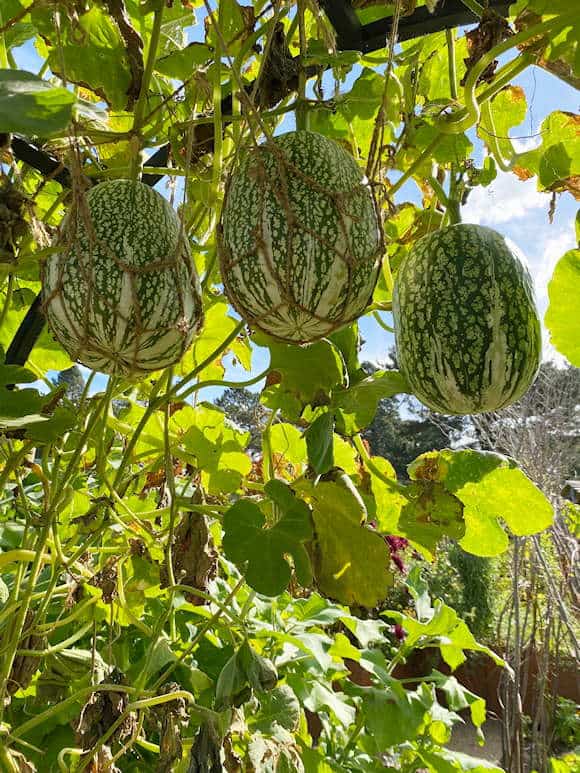
Fig-leaf Gourds from Peru
The World Food Garden has changed my preconceptions of what productive gardening can be. A beautiful, intimate space filled with an astonishing collection of vegetables, fruit and flowers. RHS Wisley has improved beyond all recognition in recent years and this latest addition is the jewel in its crown.
Late August, 2025
Garden Details:
Website: https://www.rhs.org.uk/gardens/wisley
Address: Woking, Surrey GU23 6QB
Café: Several, scattered through the gardens
Dogs: No
Disabled Access: Although the site is hilly, there is excellent provision
Opening Times: 9.00 – 600pm – last entry 5.00pm, closed Christmas Day.
Richard Jackson
